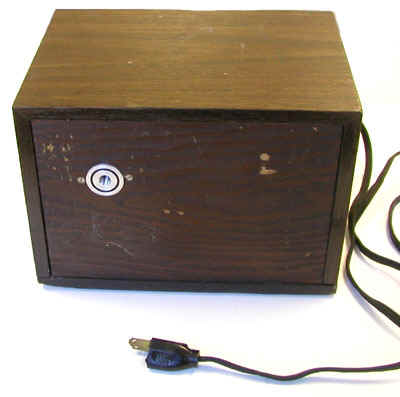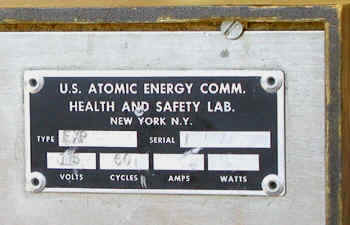Prototype Working Level Monitor from the Health and Safety Laboratory (ca. 1970s)
This is an experimental prototype of a radon daughter monitor developed at the Health and Safety Laboratory (HASL) in New York City. The identification plate on the back identifies the Model as "EXP" and the Serial Number as "1." Later on, this design became known as the MOD sampler. It is very similar to a device known as the Radon Progeny Integrating Sampling Unit (RPISU) that was developed by Keith Schiager.

This particular design was specifically developed for the Colorado Department of Health for use in Grand Junction. They "were built in wooden cabinets to make them more attractive to residents who had begun to resist the repetitious intrusion of strange and often noisy instrumentation." It was said to be "no more obtrusive than a table radio."
The monitor could not be any simpler. It is an air sampling pump with a built-in elapsed timer. The sampling head, unfortunately missing, was connected to the circular inlet on the left side of the front of the case. It employed a 1.7 cm membrane filter and two LiF TLDs. One TLD was positioned 2 mm in front of the filter. It responded to the alpha particles emitted by the accumulated radon daughters as well as background. The other TLD was shielded so that it only responded to background. The difference in the two TLD readings represented the net response to the radon daughters.

In general, the sampling was performed for one to two weeks at a flow rate of 0.1 liters per minute. At that flow rate the calibration factor was 560 counts per working level hour.
Donated by the Health and Safety Laboratory.
Reference
Guggenheim S. F., George A. C., Graveson R. T., Breslin A. J. A Time-integrating Environmental Radon Daughter Monitor. Health Physics, 36(3):452-454; 1979
